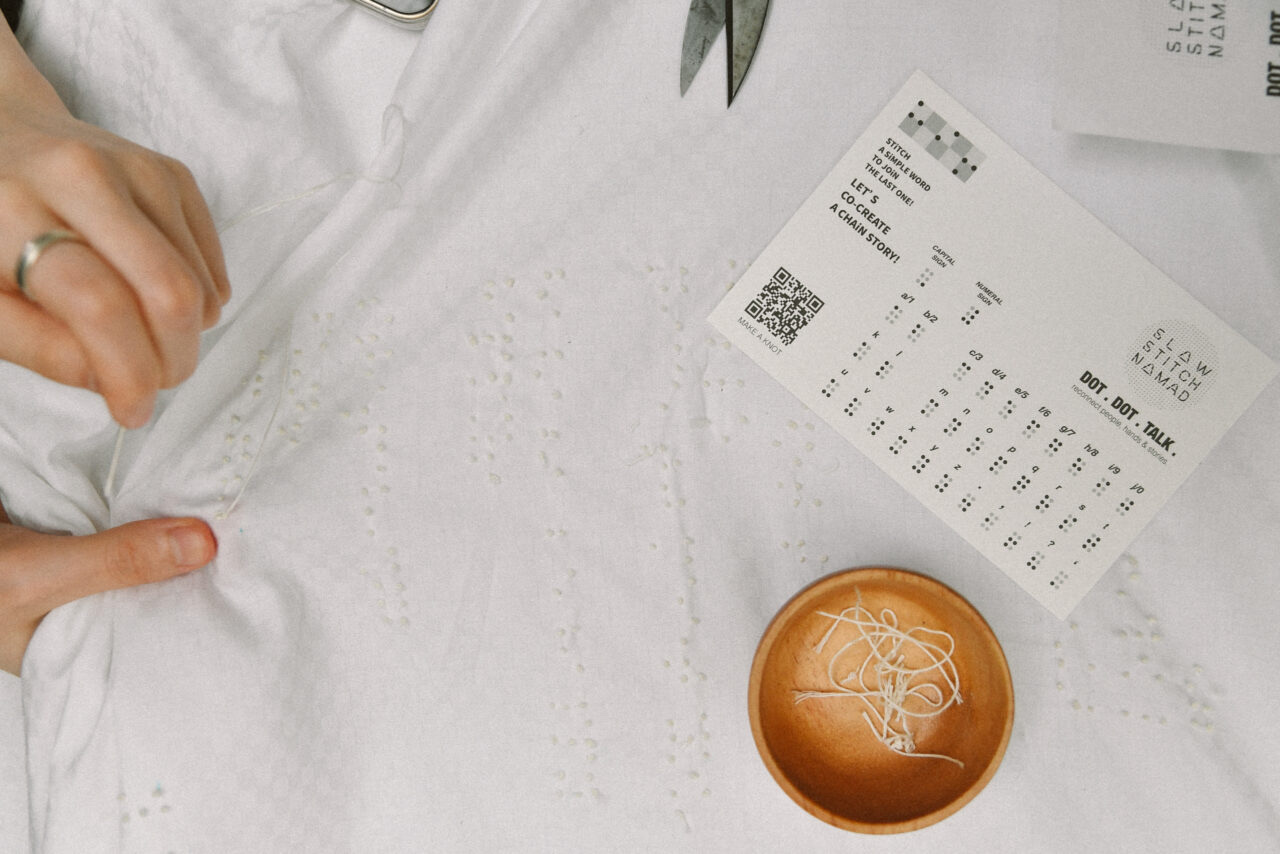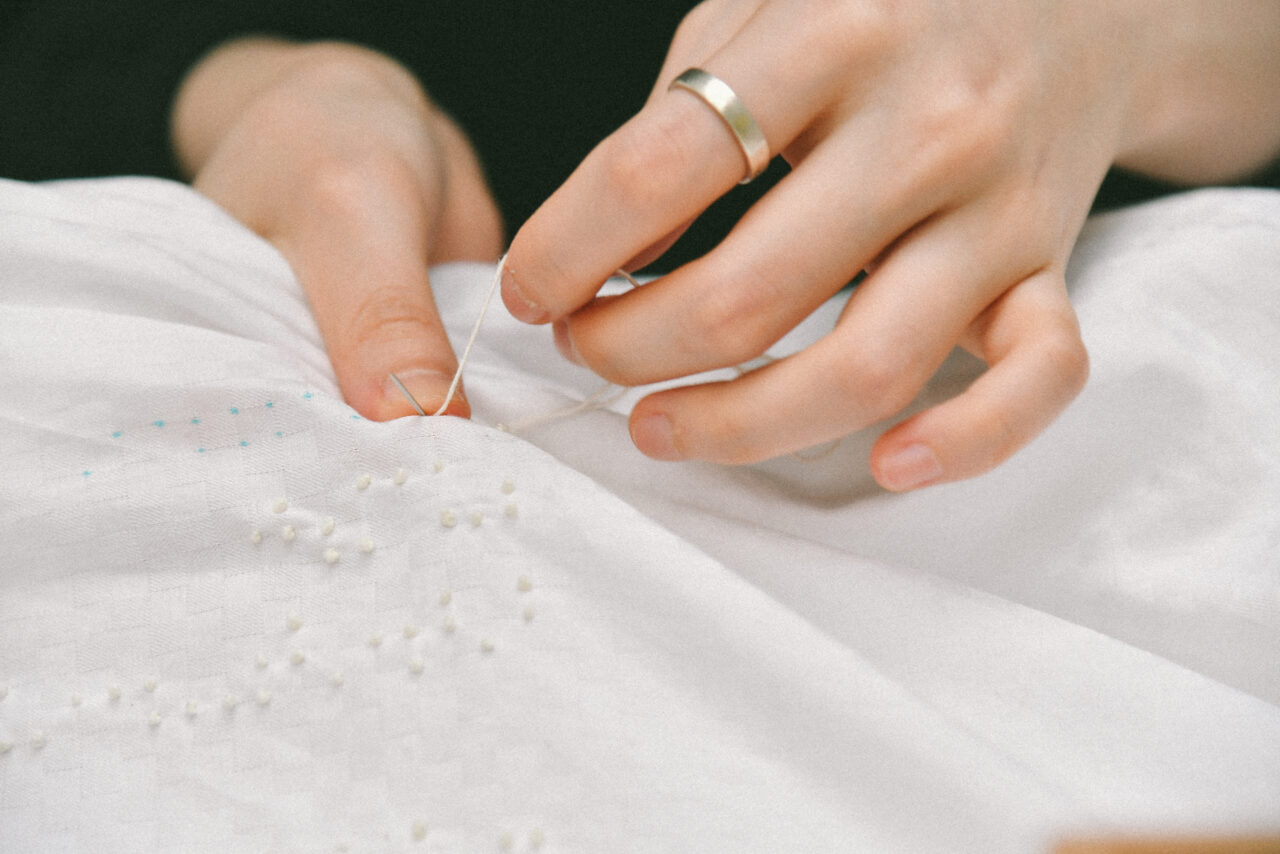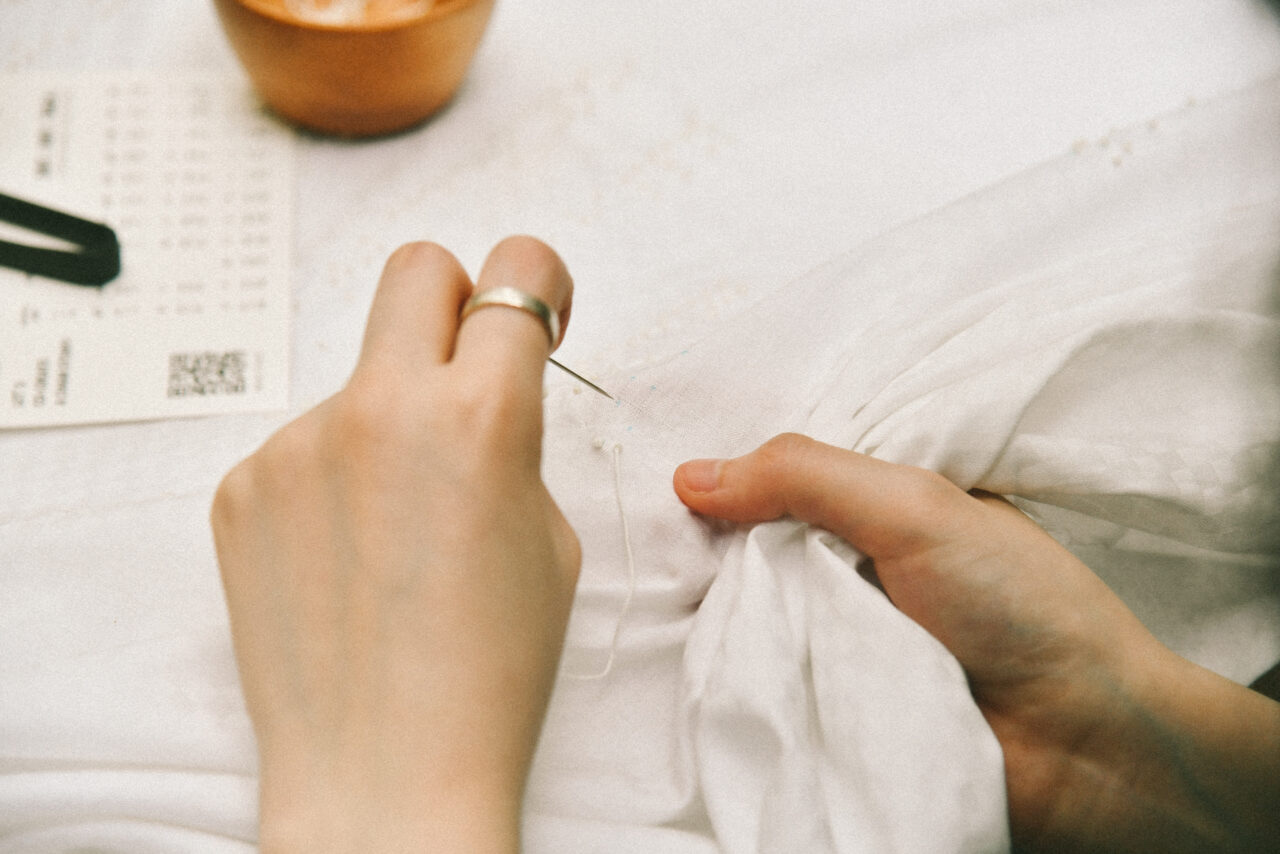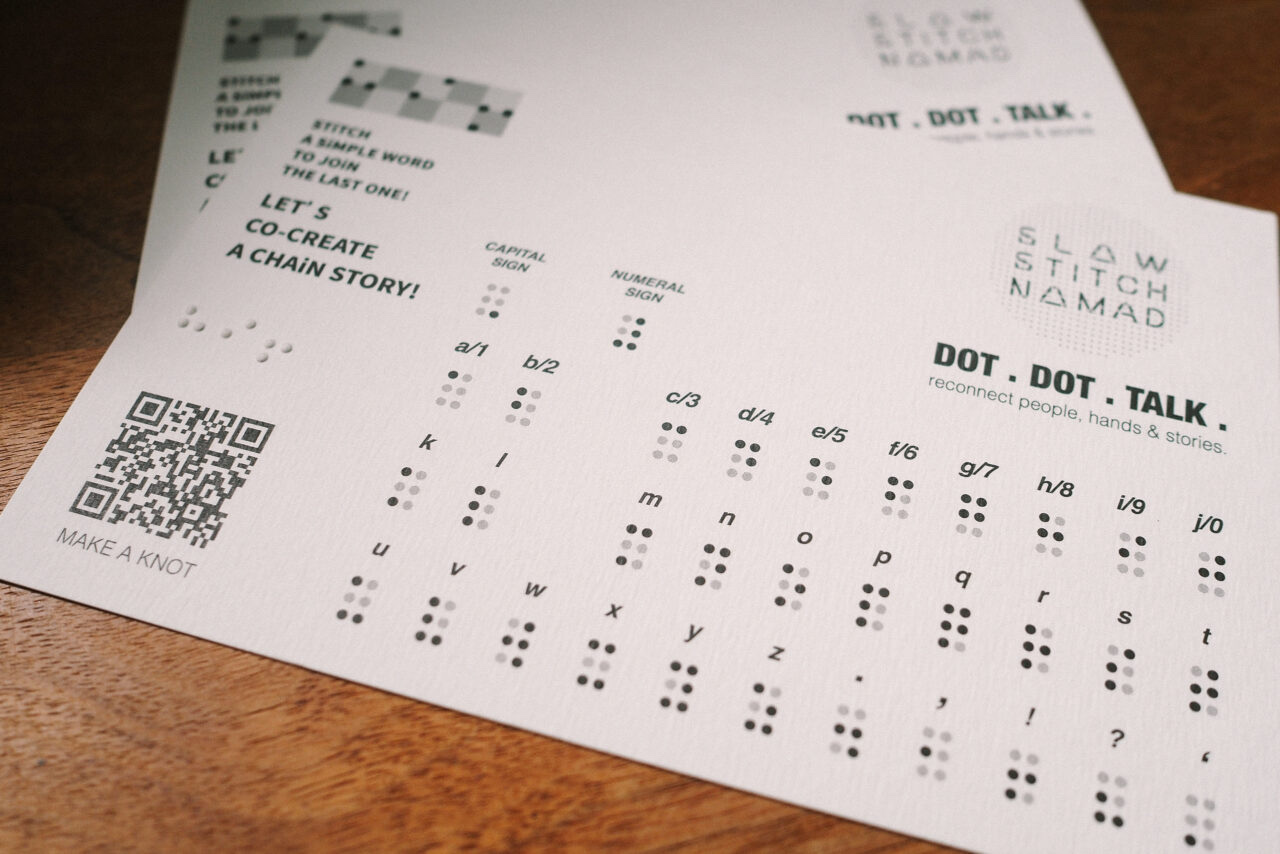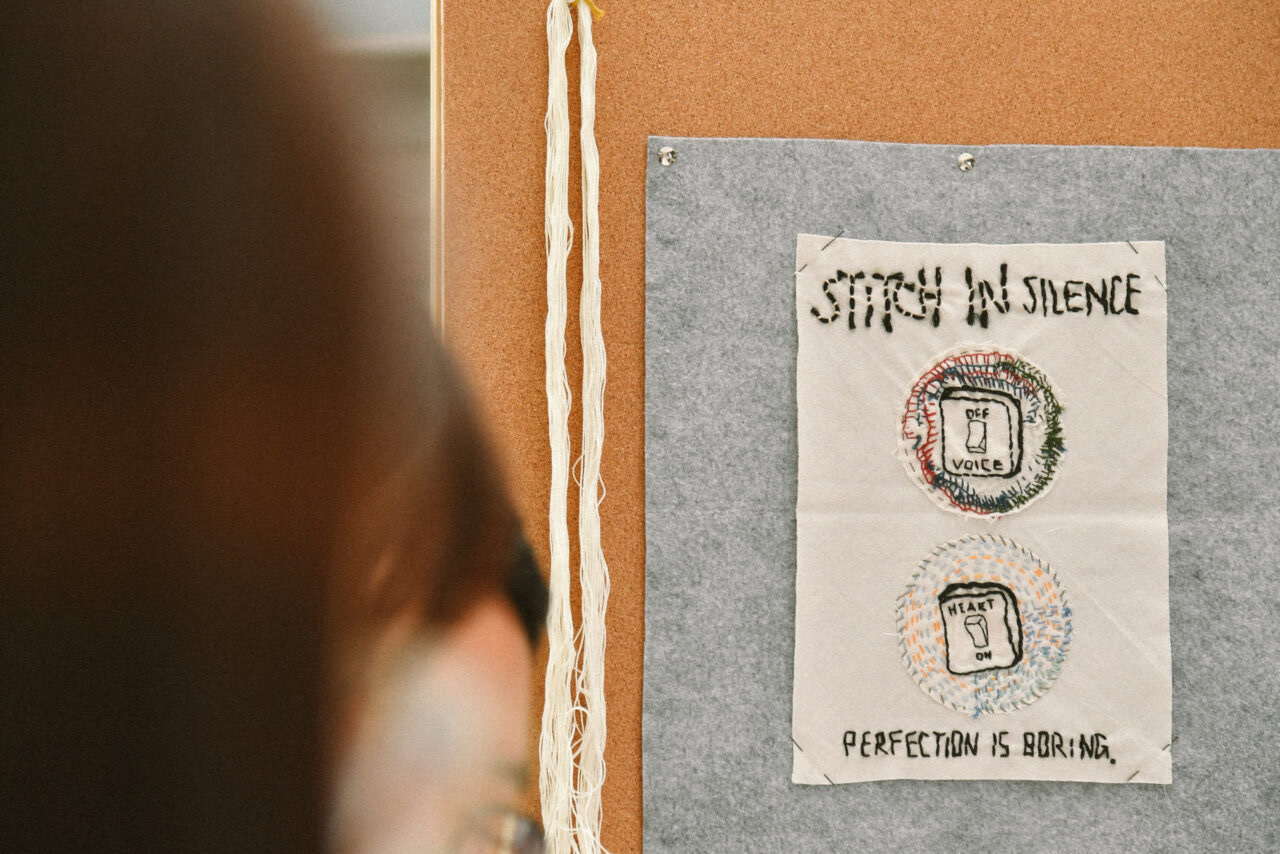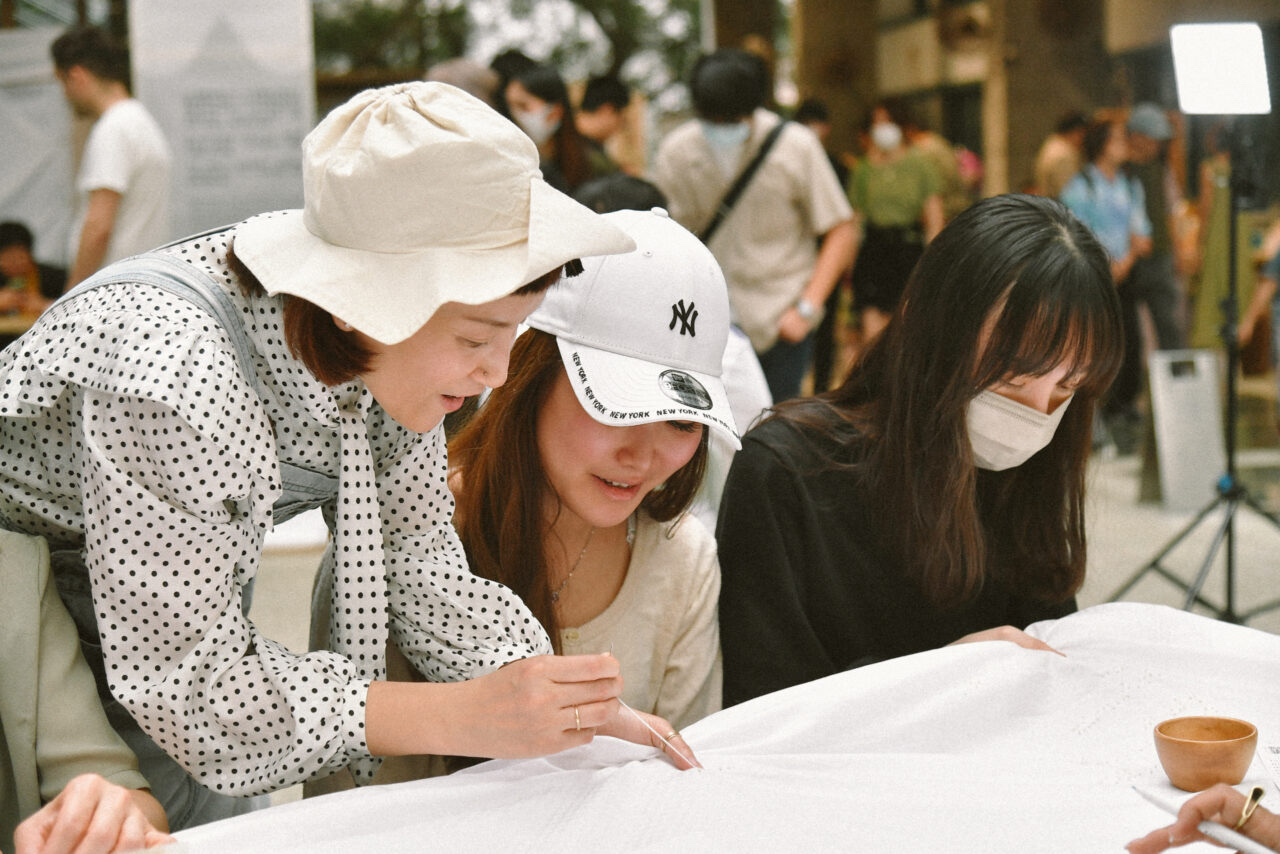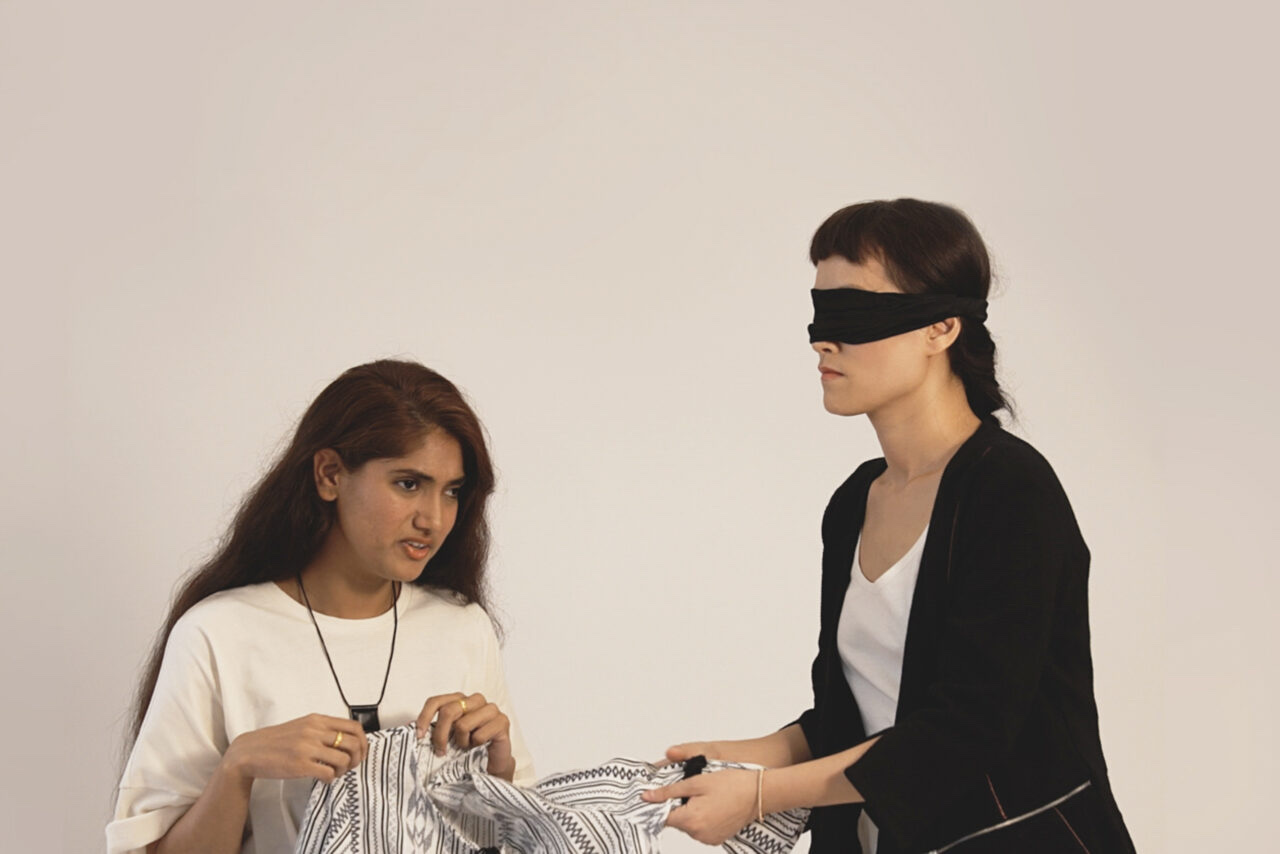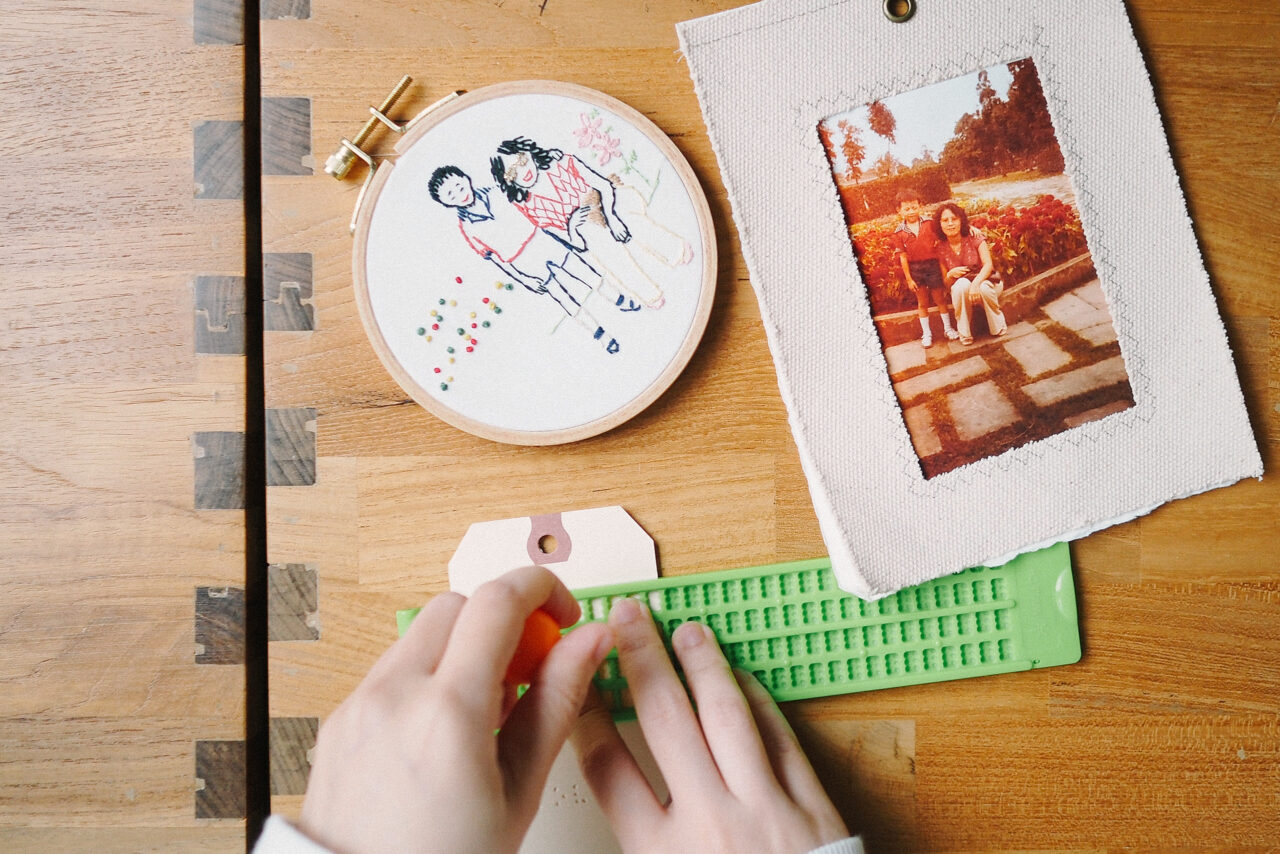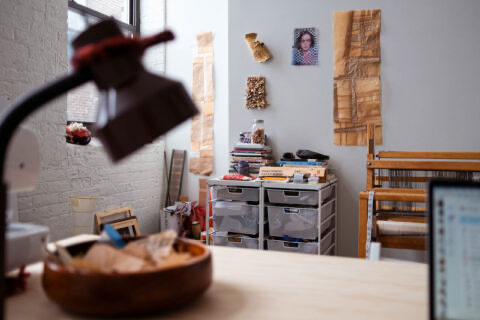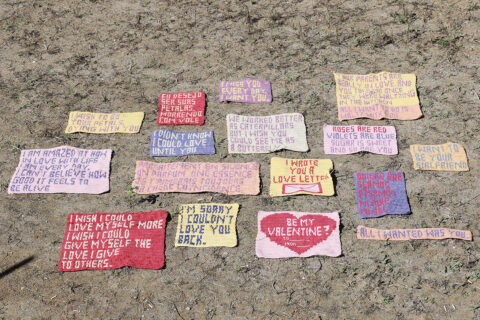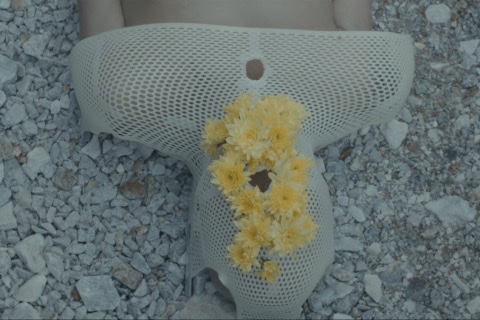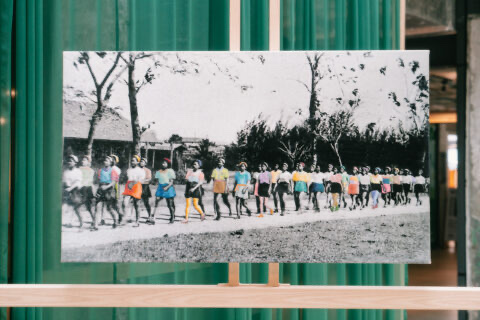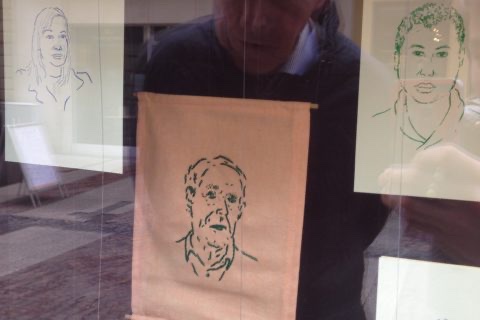記得有一天,在失明人協進會營運的休Café,約了副會長Alex,這天他送了我一套打點字的「字排」,一直以為這是一種要以年計才能學懂的語言,我們玩了一個下午,經過Alex有系統地解釋後,才發現原來只需15分鐘就可學懂英文點字。
常看見他們聽著電話超快語速的描述,我問:「現今科技在日常生活已幫了很多,還需要點字嗎?」Alex回:「話雖如此,但也並不能全面覆蓋,例如是疫情期間進入餐廳時的提示就未必能照顧到,始終多一個選擇就會帶來多一個靈活和方便;而且撇除功能,這也是一種文化。」我才恍然醒悟,如果健視的人都學會這種美麗的文字,多在日常運用這六個點的巧妙變化,共融也可以是這般簡單。
右手食指逐一觸摸字母的形態,左邊打直連續兩點是b,上方打橫兩點是c,上方三點呈7字形態是d,前面加個左右調轉的L形點字,便變成數字,a–j就會變成數目字1–0;左手食指貼著右手食指一個個字母的推進,逐個字記認,有點像小時候背誦乘數表,花一點點時間便熟能生巧。
路易士.布拉耶實在太聰明了!他在19世紀將複雜的十二點制「夜文」凸字進化成六點制點字,更取替了短短一篇文章也要用上幾本書的大大凸起的普通文字!因為他曾說:「我們不需要憐憫,也不需要被提醒我們是脆弱的。我們必須被平等對待 —— 溝通是我們實現這目標的方式。」
On the day I met Alex, vice president of Hong Kong Blind Union, at the Yau Café that the Union itself runs, I was given a set containing a Braille slate and stylus. I always thought it would take years to master Braille writing; but with the systematic explanation by Alex, I managed to pick up English Braille writing in just 15 minutes.
I often see visually impaired people listening to the speedy screen-reader on their phones. I wondered, “Modern technology has made daily life so much easier. Do we still need Braille?” Alex replied, “It could be true, but technology can’t be helpful for everything. For example, the special notices in the restaurants during the pandemic were out of reach for us. It’s always nice to have more choices as they bring more flexibility and convenience. Besides, Braille is not merely functional; it is also a culture.” It was then that I reckoned if everybody can understand the various combinations of six raised dots in Braille and make use of this beautiful form of words in their daily life, we might be able to create a more inclusive world.
Running the right index finger on the letters one by one., two vertically aligned dots on the left make a “B”. “C” is two horizontally aligned dots on the top. Three dots on the top that make the shape of a written “7” is “D”. Adding a reversed L shape in front of the letters, “A” to “J”, will turn them into the numeric of “1” to “0”. Moving the index fingers of both left and right hands slowly and reading the letters one by one. It was a bit like memorizing the multiplication table when I was a child; as in, it takes time but practice makes perfect.
Louis Braille was so smart! In the 19th century, he modified the complex Night Writing, which was a code made up of 12 raised dots, and simplified it into a six-dot system making the reading and writing of raised dots much easier. Better yet replaced the large raised text that would require using several books to write a short article. Louis Braille once said, “We do not need pity, nor do we need to be reminded that we are vulnerable. We must be treated as equals — and communication is the way we can bring this about.”
指尖的觸感常給我一種很充實的感覺,在專注時感受彷彿可通往心裡去,形同於慢針黹 —— 左手食指在布下托著點的位置,並和拇指一起固定向上的針尖,然後在交匯點打三兩個圈,這時候把拇指移前按實線圈,並把針線拉出直至形成點結後才放手,最後就把針往點下拉實便完成一個點結。
Feeling things with my fingertips often makes me feel content and fulfilled. When being focused, the feelings on fingertips go straight to heart and soul. This is kind of similar to slow stitching — position the left index finger under the dot at the back of the cloth and hold the needle with the left thumb. Wind the thread around the needle two to three times, hold the coil with the thumb, and pull the needle all the way out until a knot is formed. Re-insert the needle back down through the fabric to complete.
在3月頭第二個週末,我們在創不同舉辦的《我地大家藝術節》中,撐起《慢針黹牧民》的帳篷,教大家用點點説話,以法式打結在回收舊布上刺繡英文點字,用針線來譜寫故事,讓更多人試試用眼睛看、也用手和心來感受文字,靜靜地用指尖交流。
On the second weekend of March, we set up our SLOW STiTCH NOMAD tent at the “Expansive Art Fair” organized by Make a Different where we taught people how to sew French knots and allow them tell their stories in Braille through sewing dots on recycled old cloth. This gave people a chance to look beyond their eyes, feel the words with their hands and hearts, and communicate quietly with their fingertips.
説到這裡令我想念四位「Seeing Beauty Beyond Eyes」的主角,他們的視力都少於10%,而當中來自喀什米爾的Sofeah,是先天失明的,她在普通學校讀書,但在視覺藝術科卻屢次獲獎,她在家裡負責燙衣服,閒時也會做些縫補手作。
他們令我感到健全人士的無知,常對他們的能力大驚小怪,正如Alex所説:「只是在於你是否願意尋找方法而已,健全人士也一樣。」
那天Alex問曾翠珊導演:「你看見我嗎?」導演點頭,他再問:「那你看到我眼裡看見什麼嗎?」他解説,「我看不見表面的你,但我卻能看穿你的内心。」
Speaking of, I think of the four protagonists in Seeing Beauty Beyond Eyes who are all visually impaired. Among them, Sofeah from Kashmir is born blind. She studies in a normal school, but won many awards in Visual Arts. At home, she needs to help with ironing, and also does some handicrafts in her spare time.
They make me realize how ignorant we able-bodied people are for always making a fuss about their abilities. As Alex said, “It’s all about your willingness to find a way out. It’s the same for the able-bodied.”
That day Alex asked film director Jessey Tsang Tsui-shan, “Can you see me?” The director nodded in reply. He then asked, “Can you see what I see in my eyes?” He explained, “I can’t see you on the surface, but I can see through your heart.”
Alex分享童年舊照時,告訴我他想再摸摸媽媽的模樣,我們的「慢針黹牧民在油街實現」已為你刺繡好了,而且更用上彩色點點來做凸字呢!
As Alex shared his old childhood photos, he told me that he wanted to touch his mother’s face once again. For that reason, we’ve made an embroidery piece for you at SLOW STiTCH NOMAD @ Oi!. We even sew Braille with colored dots!

